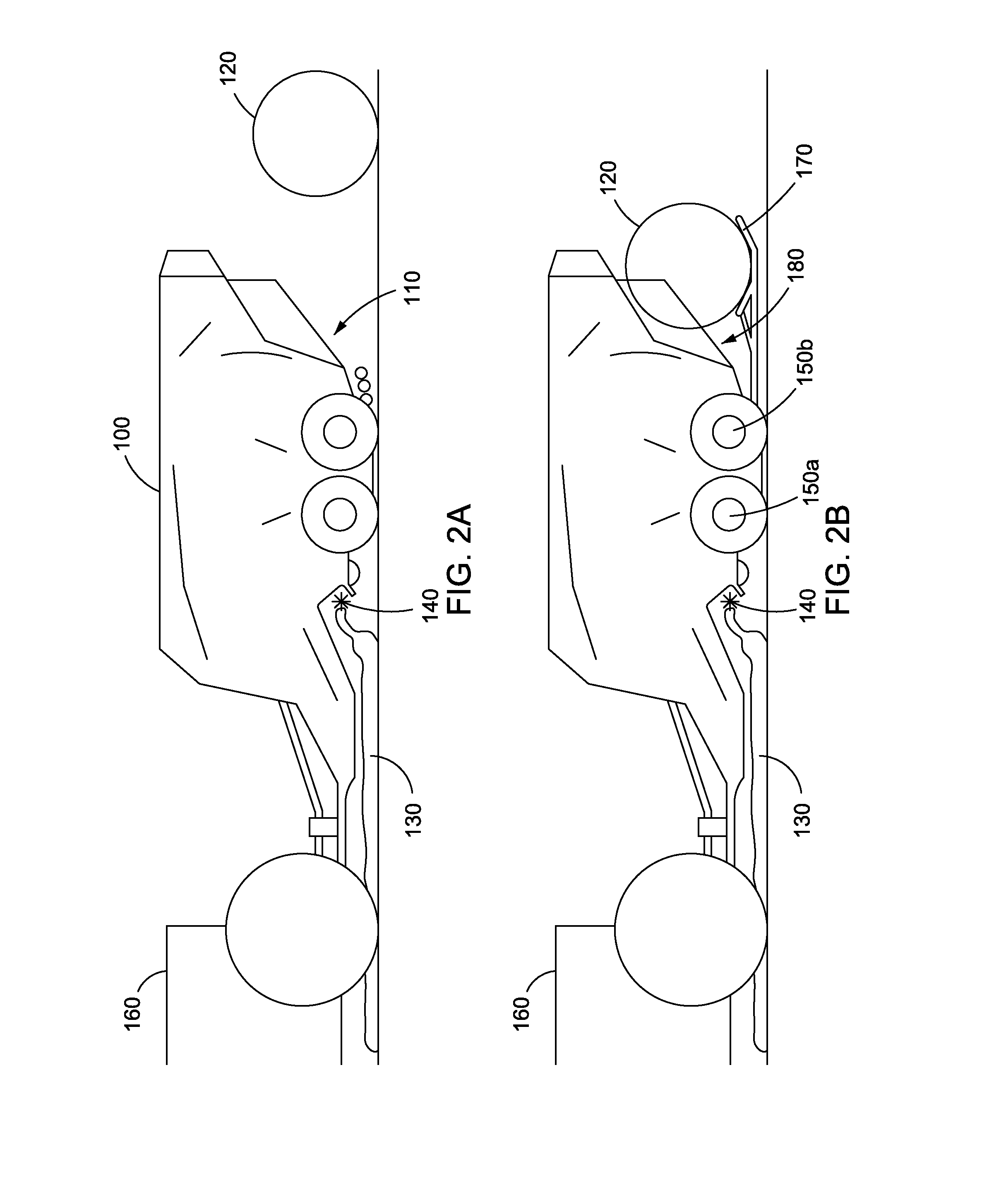Continuous round baler chambers and conveyor system
a conveyor system and round baler technology, applied in baling, picking devices, agricultural tools and machines, etc., can solve the problems of reducing the overall efficiency of the harvesting system, interrupting continuous harvesting, and affecting so as to improve the efficiency of simultaneous crop harvesting
- Summary
- Abstract
- Description
- Claims
- Application Information
AI Technical Summary
Benefits of technology
Problems solved by technology
Method used
Image
Examples
Embodiment Construction
[0055]Various terms relating to the methods and other aspects of the present invention are used throughout the specification and claims. Such terms are to be given their ordinary meaning in the art unless otherwise indicated. Other specifically defined terms are to be construed in a manner consistent with the definition provided herein.
[0056]As used in this specification and the appended claims, the singular forms “a,”“an,” and “the” include plural referents unless the content clearly dictates otherwise.
[0057]The term “bale chamber” as used herein is defined as any space within the agricultural harvester that forms a bale of harvested crop. In some embodiments, the sides of the bale chamber are defined by opposite side walls and the bottom of the bale chamber is defined by at least one floor roller that spans transverse to the sidewalls and that partially supports the weight of the bale in the bale chamber. In some embodiments, the bale chamber is also defined in its front region by...
PUM
 Login to View More
Login to View More Abstract
Description
Claims
Application Information
 Login to View More
Login to View More - R&D
- Intellectual Property
- Life Sciences
- Materials
- Tech Scout
- Unparalleled Data Quality
- Higher Quality Content
- 60% Fewer Hallucinations
Browse by: Latest US Patents, China's latest patents, Technical Efficacy Thesaurus, Application Domain, Technology Topic, Popular Technical Reports.
© 2025 PatSnap. All rights reserved.Legal|Privacy policy|Modern Slavery Act Transparency Statement|Sitemap|About US| Contact US: help@patsnap.com



